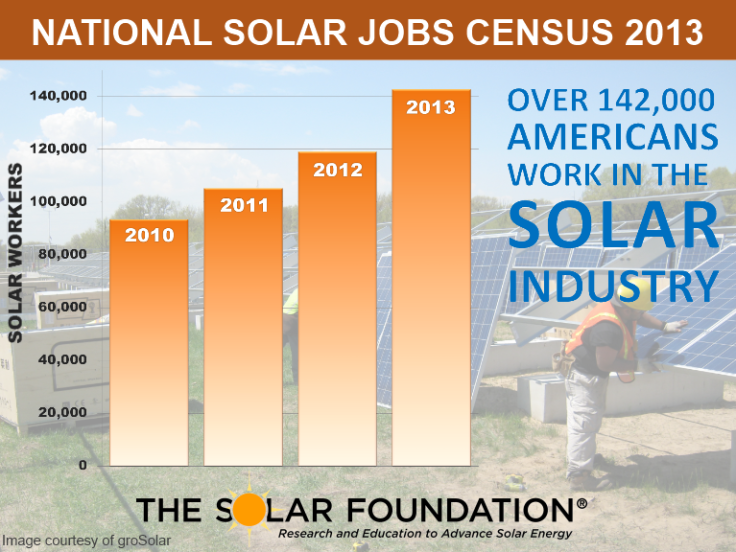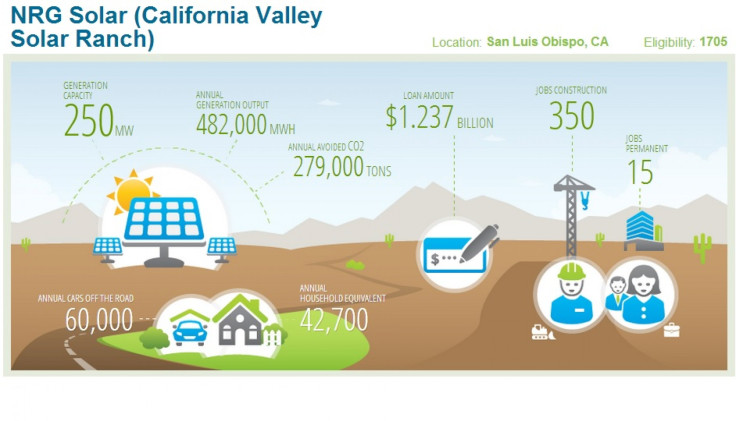US Solar Energy Employment Increases By 20 Percent
There's a sunny employment picture in the U.S. solar industry, with an increase of approximately 20 percent more jobs in 2013 over September 2012, according to a new report from The Solar Foundation.
The Washington, D.C.-based nonprofit solar research and education organization on Monday released its highly anticipated National Solar Jobs Census 2013 and found that the industry employed 142,698 Americans as of November 2013.
“The solar industry’s job-creating power is clear,” Andrea Luecke, executive director and president of The Solar Foundation, said. “The industry has grown an astounding 53 percent in the last four years alone, adding nearly 50,000 jobs … Our Census findings show that for the fourth year running, solar jobs remain well-paid and attract highly skilled workers. That growth is putting people back to work and helping local economies.”
Solar employment is also expected to grow in 2014 by 15.6 percent, which represents approximately 24,000 new solar workers.

One example of a solar project becoming commercially operational this year was California Valley Solar Ranch, built by NRG Energy Inc. (NYSE:NRG) and SunPower Corporation (NASDAQ:SPWR). The project created hundreds of jobs and put an estimated $315 million into the local economy. The plant now powers 42,000 homes.

“When it comes to the U.S. economy, solar is continuing to create tens of thousands of new jobs across the country,” Rhone Resch, president and CEO of the Solar Energy Industries Association (SEIA), said in a statement in response to the census. “The Solar Foundation's latest national jobs census confirms that 2013 was a record-shattering year, with the solar industry creating more than 10 new jobs every hour of every work day throughout the year.”
The U.S. solar industry is not only adding jobs to the market but also helping President Barack Obama achieve his climate action plan to reduce greenhouse gases by 17 percent by 2020, from 2005 levels. One way the administration is combating carbon emissions is by promoting renewable energy programs.
To meet the 2020 goal, other renewable projects besides solar have been put in place by the Department of Interior. Since 2009, Interior has approved 25 utility-scale facilities, nine wind farms and 11 geothermal plants, which together would provide enough electricity to power 4.4 million homes.
A key component of the action plan is to expand and modernize the electric grid to save consumers money on energy bills while promoting cleaner sources of energy. In support of these goals, Obama signed a memorandum this month to direct federal agencies to “streamline the siting, permitting and review process for transmission projects across federal, state and tribal governments.”
Solar power is becoming increasingly attractive to attractive to homeowners, states and corporations looking to save on their electricity bills
Today, businesses, nonprofits and government organizations have installed new solar panels producing more than 1,000 megawatts of power. As of mid-2013 the total commercial deployment was 3,380 megawatts for 32,800 facilities across the U.S., increasing to more than 40 percent since the previous year, according to the Solar Energy Industry Association.
© Copyright IBTimes 2024. All rights reserved.





















